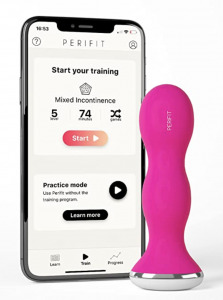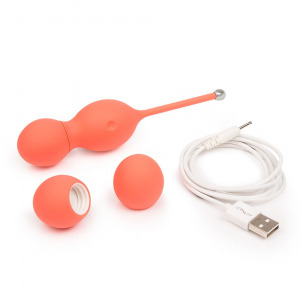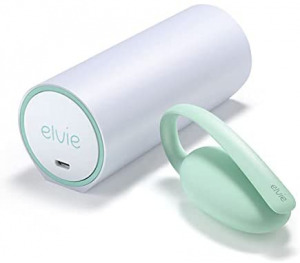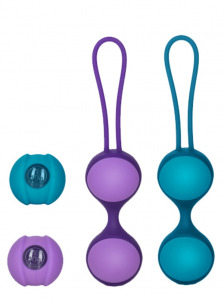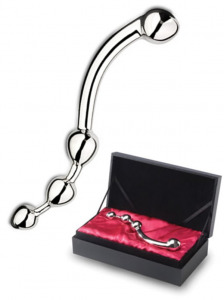Featured Image Source
Until this year, I didn’t even know my pelvis had a floor.
And my dad is a urologist, which makes my ignorance even more embarrassing.
It was only when a friend was in physical therapy and told me she had to do “pelvic floor” exercises that I became aware of its existence.
So what is it? Do I need to strengthen my pelvic floor?
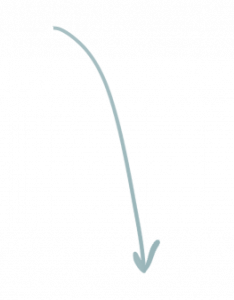
According to the Cleveland Clinic, “The pelvic floor is a group of muscles found in the floor (the base) of your pelvis (the bottom of your torso). If you think of the pelvis as being the home to organs like the bladder, uterus (or prostate in men) and rectum, the pelvic floor muscles are the home’s foundation.”
It’s a home for important stuff!
And that means you need to take care of it, even if you’re not having issues.
Symptoms
Pelvic Floor First, an organization dedicated to helping women (and men, but for once, this isn’t about them) struggling with pelvic floor issues, lists these signs as a possible problem:
-
Accidentally leaking urine when you exercise, laugh, cough or sneeze
-
Needing to get to the toilet in a hurry or not making it there in time
-
Constantly needing to go to the toilet
-
Finding it difficult to empty your bladder or bowel
-
Accidentally losing control of your bladder or bowel
-
Accidentally passing wind
-
A prolapse (in women, this may be felt as a bulge in the vagina or a feeling of heaviness, discomfort, pulling, dragging or dropping)
-
Pain in your pelvic area
-
Painful sex
Ok, all those sound serious and possibly life-altering — it would be hard to go about your daily life knowing you could pee or poop your pants at any time, not to mention the painful symptoms mentioned.
So how does this happen, and why?
Causes
The most common causes for weak pelvic floor muscles are menopause, pregnancy, and childbirth, according to Pelvic Floor First.
But some women do suffer from it at an early age without going through any of the above mentioned events, although there’s no scientific or genetic component pointing to why.
It’s less common, but this condition can also swing the other way — some suffer from their pelvic floor muscles being too tight, meaning they cannot relax them.
Obviously in these cases any kind of strengthening exercises can exacerbate the problem, so be sure to check with a professional before you start any kind of pelvic workout.
Most Common Symptom
A big issue that affects women suffering from a weakened pelvic floor is urinary incontinence —bladder control problems.
Doctors may suggest trying bladder control training, which consists of exercises to help build up the muscles you use to stop yourself from urinating.
Pelvic muscle exercises (AKA Kegels) work the muscles that you use to stop urinating. Strengthening these muscles can help you hold urine in your bladder longer.
I’ve done Kegel exercises, but I legit thought those did something to your vagina. Like, made it tighter?
I can’t remember who told me that or why I accepted it as fact, but at least I’ve been working out my pelvic floor.
I’ve been kegeling at my desk for years not knowing what I was actually kegeling for — how embarrassing for me.
Add-ons/Products
There are even Kegel exercise products you can get to help tighten up that floor during your pelvic workout sesh.
Angela Fishman, a licensed physical therapist who specializes in pelvic-floor therapy, told Glamour, “Research shows that using vaginal weights does indeed strengthen our pelvic-floor muscles; however, research also shows that using vaginal weights is not any more effective than doing other pelvic-floor muscle exercises, such as Kegels.
“So the lesson is, just do something! If the idea of lifting weights with your vagina appeals to you, go for it. If the idea turns your stomach, then Kegel away.”
The best Kegel weights according to Glamour are:
The Perifit
“Into gaming? The Perifit is a smart Kegel exerciser that connects to an app and lets you play video games as you exercise your pelvic-floor muscles. When you contract your muscles, the butterfly in the game flies up, and when you loosen them, it soars low. The name of the Super Mario Bros.–esque game is to collect points, but also to guide your Kegel exercises in a fun way. Jeffcoat recommends Perifit as an effective way to work your pelvic-floor muscles if you’re working without a trainer.”
Silicone Kegel Exercisers
“Je Joue’s Kegel Exercisers come in three shapes and vary in weight. Start with the lightest weight ball (1.65 ounces) and work up to the heaviest (3.73 ounces). Simply insert and squeeze (ask your pelvic-floor therapist or ob-gyn how many reps they recommend you do each time), pulling on the string the balls are attached to for more resistance, as well as stimulation. When you’re finished, all you need to do is pull the string and the device will smoothly come out.”
We-Vibe Bloom Vibrating Balls
“We-Vibe’s Bloom Kegel Exerciser features vibrating balls that you attach to the main body of the tool. The three balls come in three separate weights (10 grams, 30 grams, and 45 grams), which you would switch out as you progress in your pelvic-floor strengthening. It’s easy to use, is rechargeable, and lasts up to 90 minutes, and you can use the We-Vibe app to control the vibrations. As a bonus, the Bloom can totally be used for solo or partnered play; several happy customers have shared that they’ve also used the tool to stimulate the clit and G-spot for orgasms galore. To remove the Bloom, all you need to do is gently pull on the silicone string.”
The Elvie Trainer
“The Elvie Trainer is one of the most popular Kegel exercisers, thanks to its intuitive technology, guided training sessions, and the results most users see in a fairly short amount of time (although Elvie says it takes about four weeks to get results, just know that this will vary user to user). The Elvie comes with a silicone, insertable device that syncs with the Elvie Trainer App, which walks the user through five-minute workouts and corrects you if you’re not using it correctly.”
Mini Stella II Kegel Balls
“These Kegelballs (also known as Ben Wa Balls) are ‘meant for users who would prefer something smaller.’ They’re great for beginners and are multifunctional since you can use them for G-spot stimulation (they’re what Christian Grey gives Ana Steele to insert before going out to dinner to meet his family in 50 Shades of Grey). While the balls are smaller in diameter, they’re still weighted (one at 30 grams and the other at 40 grams), so as you contract and relax after inserting, you’ll be working out your Kegel muscles. When you’re finished, just tug on the silicone string the balls are attached to.”
The Attain
The Attain is an FDA-approved over-the-counter device that was mainly designed to help with incontinence by strengthening the pelvic floor muscles. The Attain uses handheld visual biofeedback with a probe you insert which dilates and stimulates the muscles, strengthening them over time. After inserting the probe, The Attain will give you visual cues that instruct you when you squeeze and let go. As you continue your session, the biofeedback will light up and essentially give you a progress report in real time.
Neen Pelvic Floor Educator
“Natalie Toshkoff, a pelvic-floor therapist based in New York, tells Glamour that she suggests the Neen Pelvic Floor Educator to people she works with because “the device is comfortable and easily shows you when you are correctly performing a pelvic-floor contraction or Kegel. The most important thing to keep in mind is that an evaluation by a pelvic-floor physical therapist is a must before using any kind of pelvic-floor exercise device. If you have increased muscle tone in your pelvic floor, you will need different strategies to improve your symptoms and performing Kegels may not be the answer.”
Liberty Pelvic Floor Stimulator
“Fishman recommends this clinic-level product to her patients, telling Glamour that a device like this is typically meant to be used for a short period of time until “the pelvic-floor muscles are strong enough for the [person] to do Kegels on their own. They are great for people who have very weak pelvic muscles or difficulty coordinating a Kegel.” The Pelvic Floor Stimulator actually sends an electric signal to the vagina or rectum and helps the muscles contract if they’re having trouble doing so on their own. It’s a pricey tool, but it’s typically covered by health insurance and Medicare.”
Fun Wand Metal Dildo
“Some like to use wands with balls built in — this option lets you exercise using weight and size. They are also fantastic erotic toys.” Steel is body-safe and easy to clean, and you can play with the toy’s temps if you want. Plus, steel dildos are heavier (this one comes in at over half a pound), making your muscles do some work. For Kegel exercise, you would insert the dildo vaginally, contract and relax around the balls, and repeat.”
Not gonna lie, these products sound like a good time — you can work out and play in one session.
I’m going to keep up with my Kegels, but now I’m doing them for the right reasons.
For more info or resources on pelvic floor health, visit the NIH, Cleveland Clinic and Pelvic Floor First.

Have you every tried pelvic floor therapy? Would you ever use one of the products listed to help strengthen it? Tell us your thoughts in the comments.
For More On Health And Wellness, Check Out These Articles:
You’re Sleeping Enough, But You’re Still Tired? This Might Be Why
We Talked To Abby Anderson, A Wellness Coach Dedicated To Helping Women Thrive

